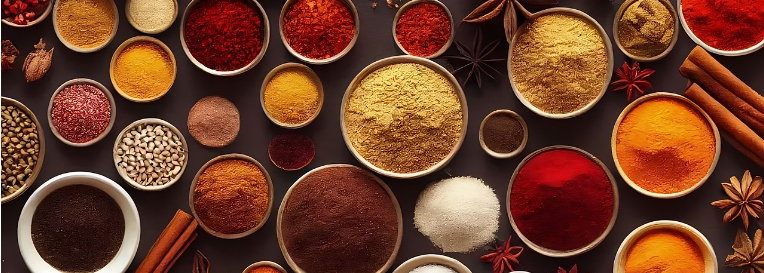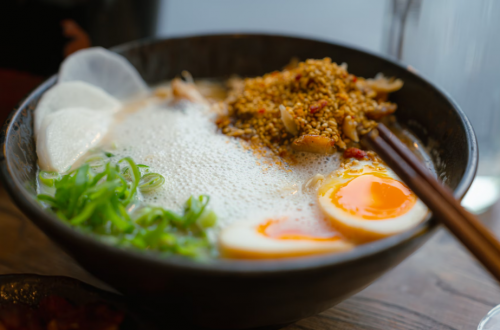
Spice Route Explorations: Aromatic Culinary Adventures
Introduction
The ancient Spice Route is more than just a historical trade path; it’s a journey through flavors, cultures, and the meeting of East and West. Stretching across continents, this route connected civilizations and introduced a dazzling variety of spices into global cuisine, enriching it with vibrant tastes and aromas. Today, we embark on a journey along the Spice Route to uncover the culinary treasures that await modern travelers, inspiring an adventure of taste and culture.
The Ancient Trade Path: Origins and Importance
The Origins of the Spice Route

The Spice Route, originating over 2,000 years ago, began as a network of trade paths connecting Southeast Asia, South Asia, the Middle East, and Europe. It facilitated the exchange of highly prized spices such as pepper, cinnamon, and cardamom, which were worth their weight in gold. This trade route did not only pave the way for commerce but also became a significant cultural bridge, allowing various customs, traditions, and ideas to intermingle across borders.
How Spices Shaped Cultures and Cuisines Globally
Spices had a transformative impact on the cultures they touched. Once spices reached Europe, they became coveted items, adorning the tables of nobility and bringing new dimensions to the cuisine of the era. Through spice trade routes, the culinary practices of Asia, the Middle East, and the Mediterranean evolved, blending exotic flavors and techniques to create dishes that continue to influence modern cuisine around the world.
Exotic Spice Destinations to Discover
India: The Birthplace of Rich Flavors
India is considered one of the most prominent hubs of spice cultivation and has long been central to the spice trade. Known for producing a wide range of spices like pepper, turmeric, and cardamom, India offers a culinary experience like no other. The vibrant curries, rice dishes, and chutneys showcase the harmonious balance of spices that characterize Indian cuisine and capture the heart of the Spice Route.
Sri Lanka: The Cinnamon Isle, a Sweet-Scented Treasure
Sri Lanka, famous for its high-quality cinnamon, is often referred to as the Cinnamon Isle. The sweet, fragrant aroma of Ceylon cinnamon is distinct and adds a warm depth to any dish. From traditional Sri Lankan curries to sweet treats, cinnamon remains an essential element, lending a unique taste to the island’s cuisine.
Middle East: Aromatic Hubs of the Spice Trade

The Middle East, positioned strategically along the Spice Route, served as an aromatic junction for the trade of spices. From vibrant souks in cities like Istanbul and Damascus to the luxurious bazaars in the UAE, this region thrived on the commerce of spices such as saffron, sumac, and za’atar. Middle Eastern cuisine, rich in spices, features kebabs, stews, and rice dishes infused with warm and exotic flavors.
Iconic Spices and Their Unique Properties
Cardamom and Cloves: Earthy and Sweet Delicacies from the East
Cardamom and cloves are two of the most prominent spices originating from the Spice Route. Cardamom’s sweet, citrusy aroma pairs well in both savory and sweet dishes, making it a versatile ingredient in Indian, Middle Eastern, and Nordic cuisines. Cloves, with their earthy, slightly peppery taste, are commonly used in marinades and spice blends, adding depth to sauces, curries, and even beverages.
Saffron: The Golden Spice, Precious and Flavorful
Saffron, known as the “golden spice,” is prized for its luxurious aroma and vivid yellow color. Originally cultivated in Persia, saffron soon traveled to Mediterranean and South Asian regions. Known for its distinct flavor, saffron is used sparingly yet powerfully in various dishes, from paellas to biryanis, imparting a warm, floral essence.
Dishes Inspired by the Spice Route

Indian Curries: Complex and Fragrant
Indian curries are a cornerstone of the country’s cuisine and vary regionally in flavor and spice profiles. Made from a blend of turmeric, cumin, coriander, and other spices, Indian curries are known for their complexity and fragrance. Each curry is an explosion of flavors, transporting the taste buds on a journey of layered spices.
Persian Kebabs: Infused with Aromatic Spices
Persian kebabs, often marinated with spices like saffron, cardamom, and cloves, are famous for their tender texture and savory flavors. These kebabs showcase the Persian mastery of spice combinations, creating a dish that is both comforting and flavorful, appealing to anyone with an appreciation for grilled meats and fragrant spices.
Mediterranean Spiced Stews: Blending Spices for Depth and Warmth
The Mediterranean region, influenced by the Spice Route, offers stews that are rich, warm, and layered with spices. Ingredients like rosemary, thyme, and black pepper are used alongside meat and vegetables, creating hearty dishes that are both nutritious and deeply flavorful. These stews reflect the cultural exchanges that shaped the Mediterranean’s culinary identity.
Conclusion
The Spice Route remains an enduring testament to the power of flavor, culture, and connection. As travelers explore the spices and cuisines along this ancient path, they experience a world shaped by the vibrant histories and traditions of spice. Whether through the spicy richness of Indian curries or the warm depth of Mediterranean stews, the culinary legacy of the Spice Route continues to inspire and enchant.
FAQs
- What is the origin of the Spice Route?
The Spice Route originated over 2,000 years ago as a trade network linking Southeast Asia, South Asia, the Middle East, and Europe, enabling the exchange of spices, silk, and other luxury goods. - Which spices are most iconic from the Spice Route?
Cardamom, cloves, and saffron are some of the most iconic spices from the Spice Route, each known for its unique flavor profile and culinary uses. - How did spices influence global cuisine?
Spices transformed cooking practices worldwide, introducing complex flavors, preservation methods, and diverse culinary techniques to various cultures. - How can travelers experience the Spice Route today?
Travelers can visit countries like India, Sri Lanka, and parts of the Middle East to explore spice markets, taste authentic dishes, and learn about the rich history of spices. - Are spices used only for cooking?
No, spices are also used in medicine, cosmetics, and religious rituals, highlighting their versatility and cultural significance.




